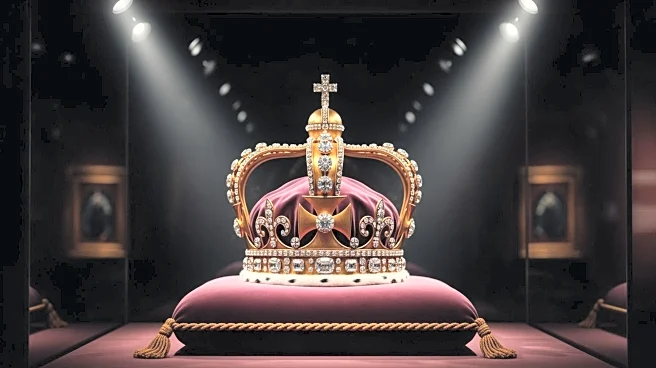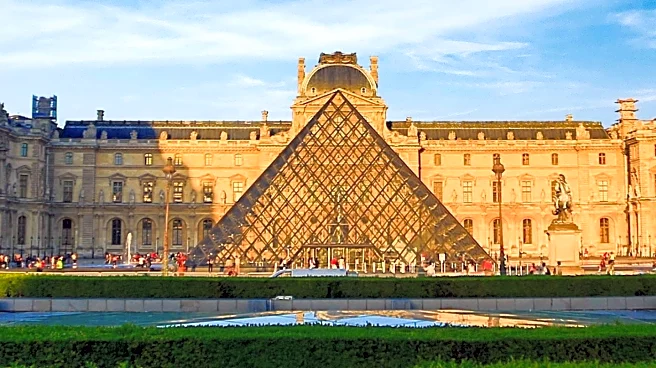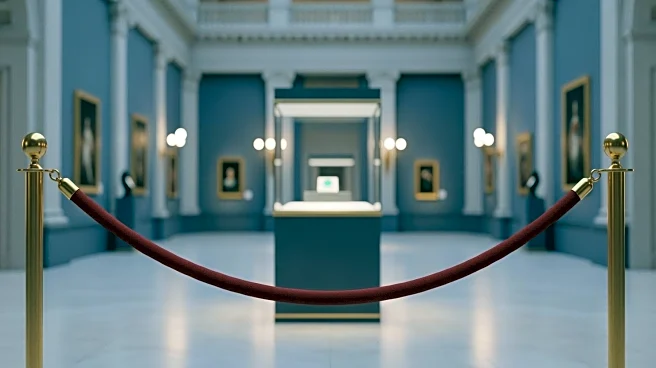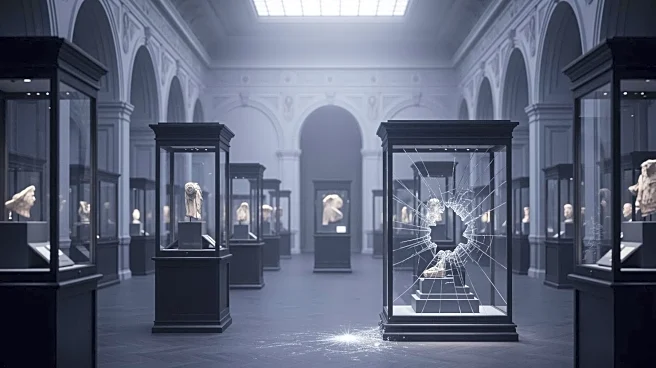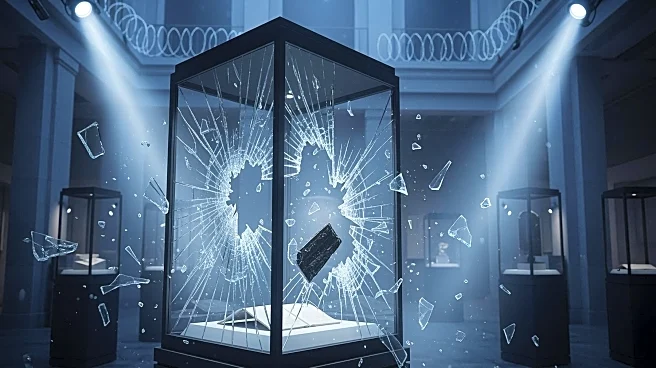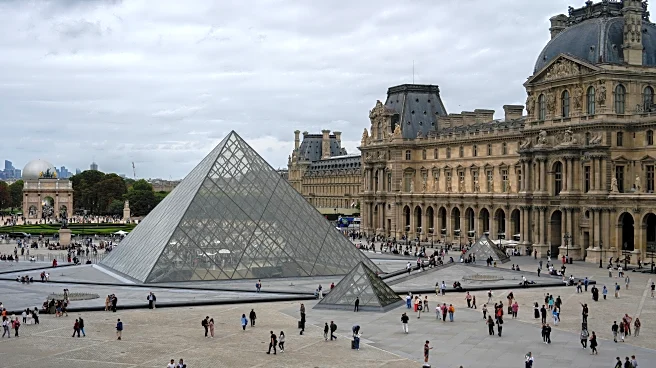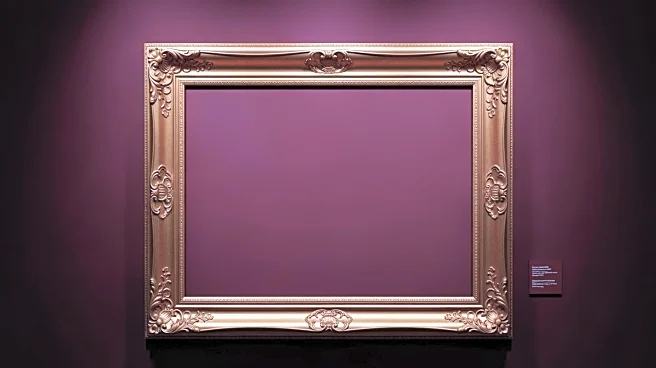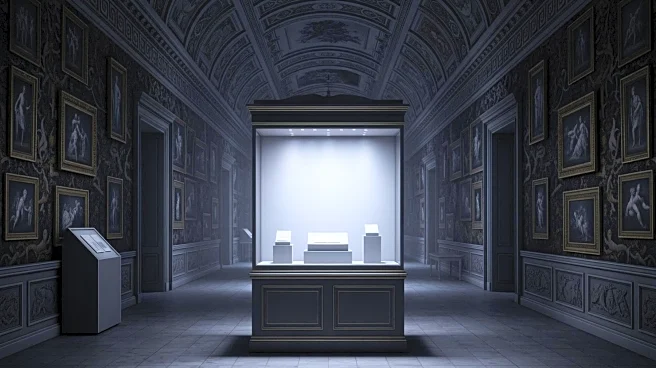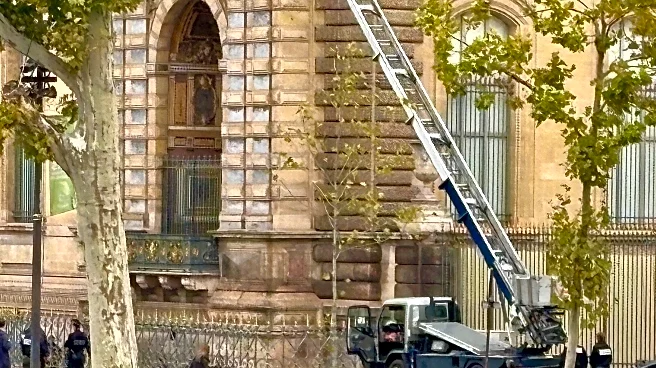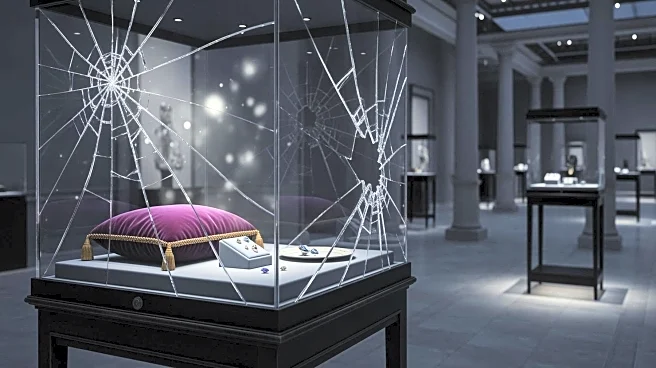What's Happening?
The Louvre Museum in Paris was closed following a significant robbery where thieves made off with priceless jewels from Napoleon's collection. The heist, described as a 'major robbery' by France's Interior
Minister Laurent Nuñez, involved individuals entering the museum using a basket lift. The operation, which lasted only seven minutes, saw the thieves cutting panes with a disc cutter to access the jewels. The Louvre, which is the world's most visited museum, closed its doors for 'exceptional reasons' without further details. The robbery took place at the Apollo Gallery, where the French Crown Jewels are displayed. One of the stolen items, believed to be Empress Eugénie's crown, was found broken outside the museum.
Why It's Important?
This robbery highlights vulnerabilities in the security of even the most prestigious cultural institutions. The theft of jewels of 'inestimable value' from a globally renowned museum like the Louvre underscores the challenges museums face in protecting their collections. The incident could lead to increased security measures and scrutiny over museum security protocols worldwide. The theft also revives historical debates about the ownership and restitution of cultural artifacts, particularly those acquired during the Napoleonic era. The loss of such significant pieces could impact cultural heritage and tourism, as the Louvre is a major attraction drawing millions of visitors annually.
What's Next?
Authorities are likely to intensify investigations to recover the stolen jewels and apprehend the culprits. The museum may implement stricter security measures to prevent future incidents. This event could prompt other museums to reassess their security strategies. The cultural sector might see increased discussions on artifact protection and the ethical implications of artifact ownership. The public and stakeholders will be keenly watching for updates on the recovery of the stolen items and any changes in museum security policies.
Beyond the Headlines
The heist at the Louvre could have broader implications for the art world, including potential impacts on insurance premiums for high-value artifacts. It may also influence future exhibitions and the willingness of private collectors to loan items to museums. The incident could spark renewed interest in the history of art thefts and the measures taken to prevent them. Additionally, it raises questions about the balance between accessibility and security in public cultural spaces.
